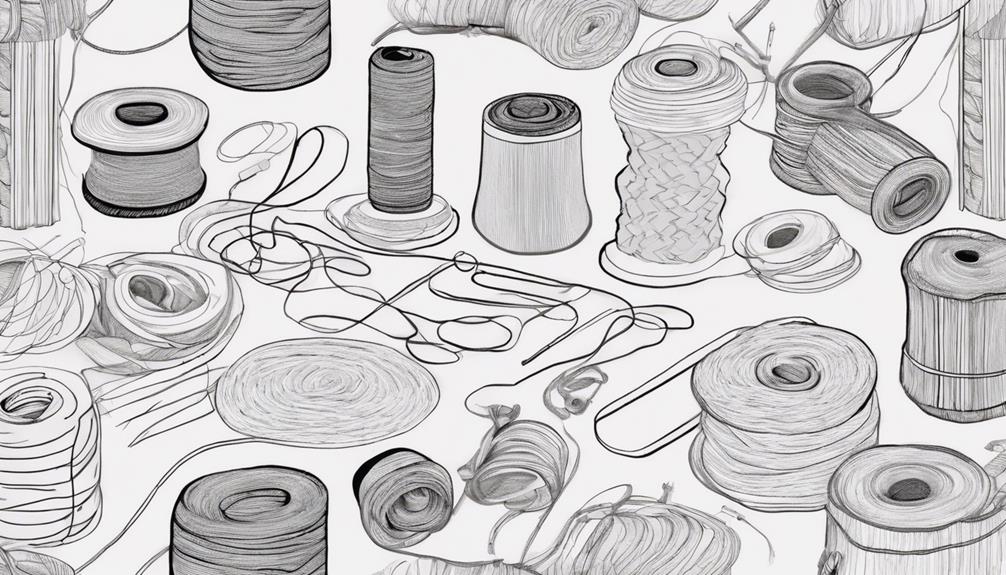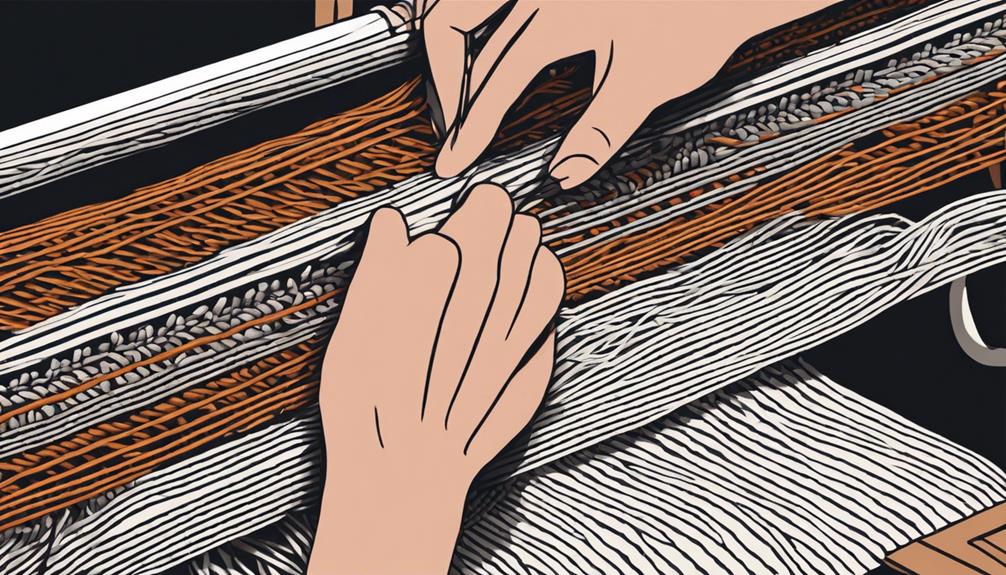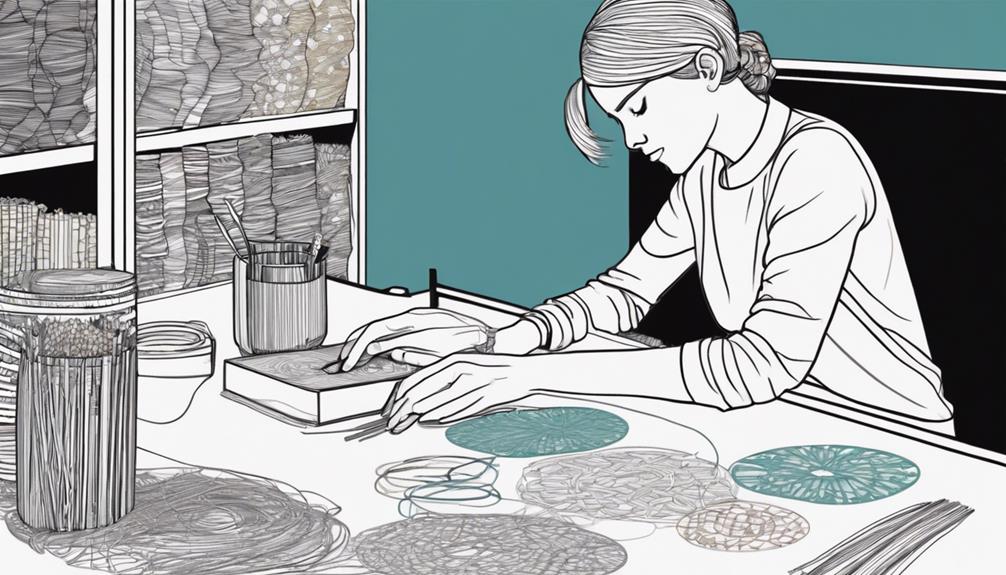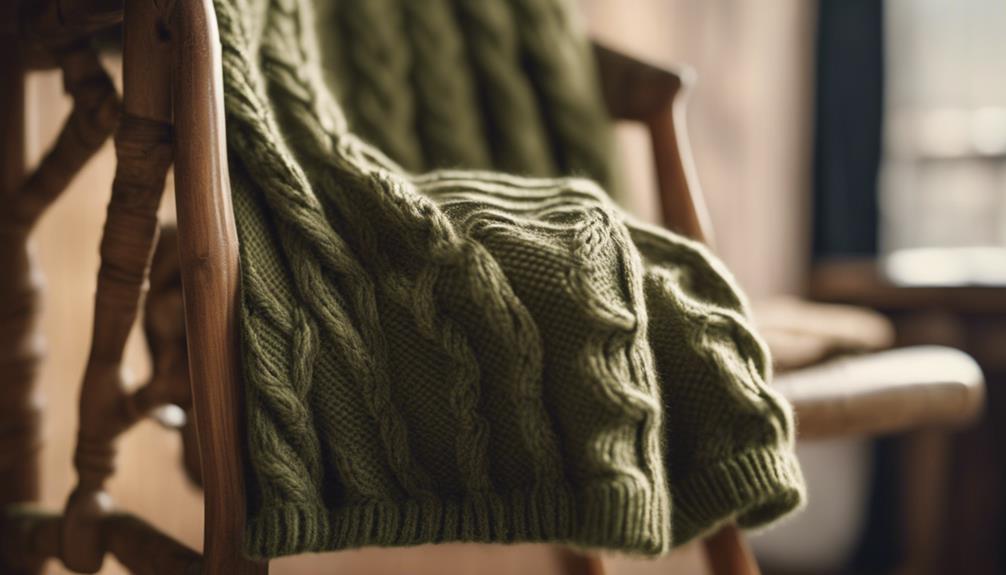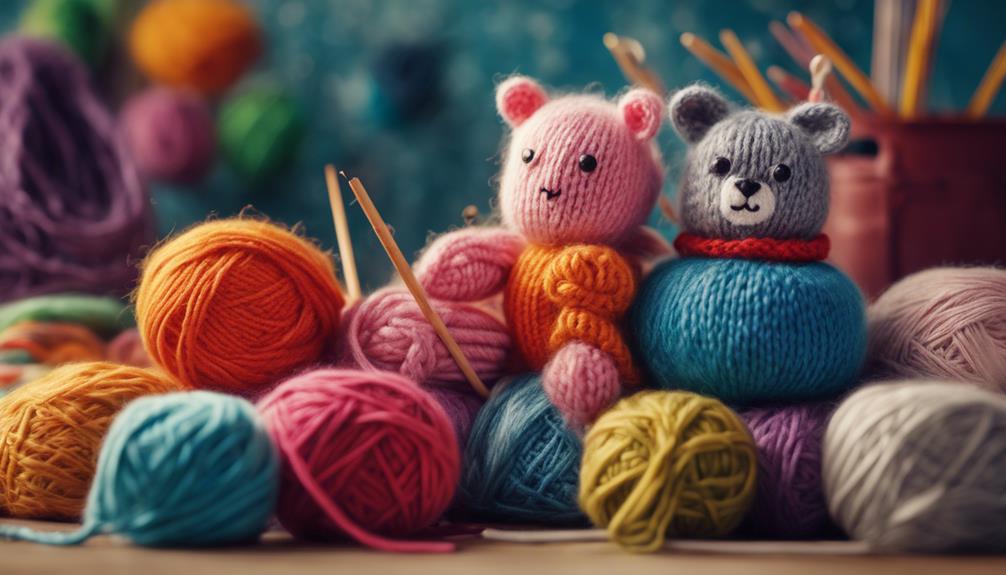If you have ever been curious, textile art and fiber art are not synonymous. Fiber art typically emphasizes natural materials like wool and cotton, whereas textile art encompasses a wider range, including synthetic materials. Both art forms have deep cultural associations but have evolved in distinct directions. The terminology you employ can impact how you are perceived within the art community. It is essential to delve into both conventional and modern practices. If you would like to delve deeper into the distinctions between these captivating art forms, there is a plethora of information awaiting your exploration.
Key Takeaways
- Textile art encompasses a wider range of materials, including synthetic fibers and metals.
- Fiber art focuses on natural fibers like wool and silk.
- Both disciplines have historical roots but differ in material emphasis.
- Terminology choice impacts artists' identity and community perception.
- Blending tradition with innovation is essential in both textile and fiber art.
Historical Connection and Evolution
Textile art and fiber art have evolved over time, showcasing a rich historical connection and a gradual shift towards innovative techniques. Historically, both disciplines have deep roots, with textiles serving practical and decorative functions in various cultures. Fiber art traditionally emphasizes organic materials such as wool, silk, and plant fibers, while textile art encompasses a broader range, including synthetics, metals, and found objects.
The evolution of these art forms has led to the incorporation of innovative techniques and a blending of traditional and contemporary practices. While fiber art typically focuses on texture and dimensionality, textile art explores a more diverse range of artistic expressions through different materials and methods.
This evolution reflects a dynamic interplay between the historical foundations of these art forms and the modern exploration of new possibilities. As artists continue to push boundaries and experiment with materials, the distinction between textile art and fiber art continues to blur, ushering in a new era of creativity and expression.
Terminology and Artistic Identity
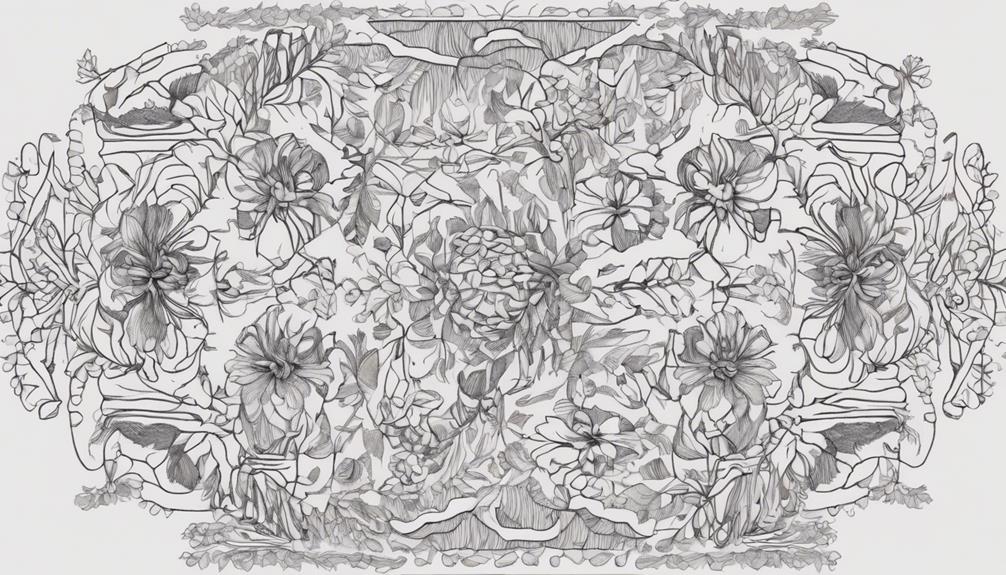
When discussing fiber art and textile art, terminology plays an important role in shaping artists' identities and public perception. The choice between using the terms fiber art or textile art can have a significant impact on how an artist is perceived within the artistic community and by the general public. By aligning with one term over the other, artists can establish their artistic identity and communicate the essence of their work more effectively.
Furthermore, the terminology used can also reflect an artist's recognition of the heritage and traditions associated with fiber art. Embracing the historical roots of fiber art while incorporating innovative techniques can help artists carve out a unique place in the art world.
Creative Techniques and Mediums
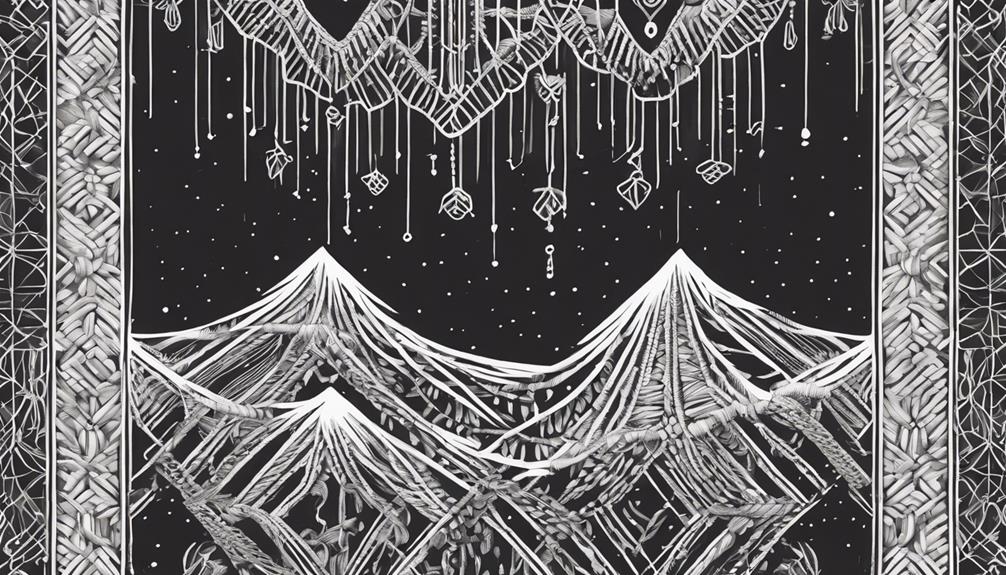
Exploring creative techniques and mediums in fiber and textile art opens up a world of possibilities for artists looking to innovate and push the boundaries of traditional artistic practices. When delving into the domain of textile art and fiber art, you can expect to encounter:
- Textile art: Utilizes a wide range of materials beyond fibers, such as yarns, fabrics, and non-traditional elements.
- Fiber art: Focuses on using natural fibers like wool, cotton, and silk in traditional techniques like weaving, felting, and embroidery.
- Traditional techniques: Emphasize the tactile qualities and organic nature of natural fibers, enhancing the sensory experience for viewers.
- Mixed-media elements: Textile art often incorporates metals, plastics, and found objects to create diverse textures and visual effects.
- Versatile medium: Both textile art and fiber art offer artists the flexibility to blur boundaries between traditional crafts and contemporary art, enabling unique forms of creative expression.
Community Engagement and Networking

To enhance your involvement in the fiber art community and expand your network, actively engaging with fellow artists and enthusiasts is key. Building connections within the textile art world not only provides a supportive environment but also opens up opportunities for collaboration and growth. By participating in community engagement and networking events, you can showcase your work, gain inspiration from others, and establish meaningful relationships within the fiber art community.
| Benefits of Community Engagement and Networking |
|---|
| Fosters collaboration and support among artists |
| Creates a sense of community and appreciation for handmade creations |
| Strengthens relationships and encourages growth in the field |
| Allows artists to showcase their work to a broader audience |
| Leads to valuable collaborations, exhibitions, and shared learning experiences |
Engaging with like-minded individuals in the fiber art community can not only enrich your artistic journey but also provide a platform for mutual support and encouragement.
Challenges and Recognition
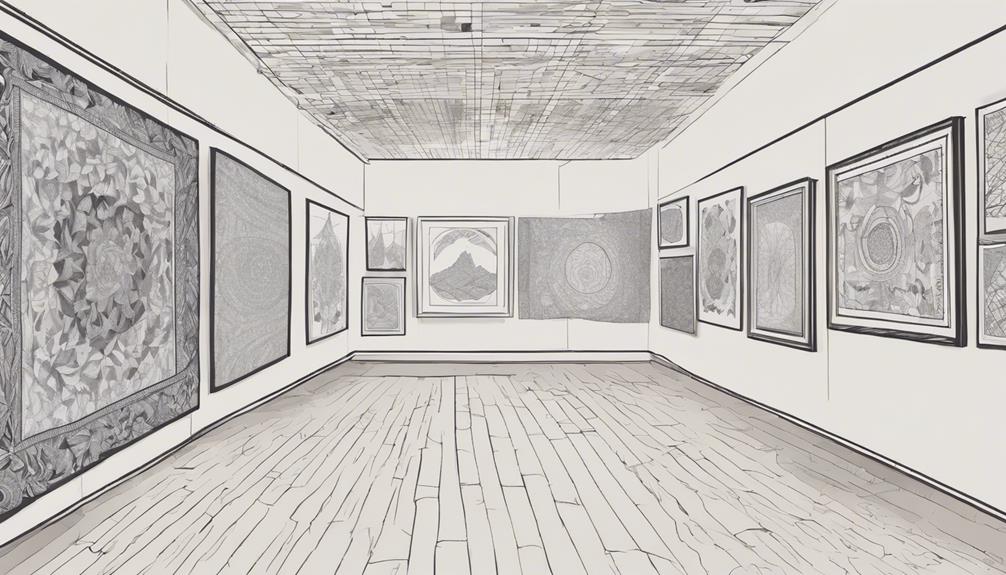
Facing challenges and seeking recognition, textile art and fiber art navigate perceptions that often undervalue their artistic merit in the broader art landscape. Despite their creativity and intricate craftsmanship, these art forms encounter obstacles that hinder their acceptance as fine art.
Some of the challenges include:
- Misconceptions about textiles as a medium
- Limited recognition leading to fewer exhibition opportunities
- Categorization as 'craft' rather than fine art
- Exclusion from the fine art category
- Overcoming biases within the art world
Artists within the fiber art movement and textile art domain continuously work to break through these barriers to gain the acknowledgment and respect they deserve. By challenging traditional notions and showcasing the innovation and skill inherent in their creations, these artists are working towards reshaping the perception of textile art and securing its position within the domain of fine art.
Frequently Asked Questions
Is Textile Art and Fiber Art the Same Thing?
Textile art and fiber art are often considered synonymous due to their shared use of fibers and textiles in creation. Techniques like weaving and stitching are common in both forms.
However, textile art can incorporate mixed-media and non-organic materials, expanding its boundaries beyond traditional fiber art.
The distinction between the two terms is influenced by regional preferences and historical connections.
Despite these nuances, both textile art and fiber art boast a rich history of creativity and craftsmanship.
What Is the Difference Between Fiber and Textile?
When it comes to fiber and textile, the difference lies in the materials and techniques used.
Fiber art leans towards traditional methods like stitching and felting, focusing on organic elements.
Textile art, on the other hand, encompasses a wider array of processes such as weaving and quilting, often incorporating non-organic materials.
Understanding this contrast can guide you through the diverse world of fabric-based creations and fiber-inspired artworks.
What Is Another Name for Fiber Art?
Another name for fiber art is textile art. It involves creating art using pliable materials like fabric and yarn. The terms fiber art and textile art are interchangeable, emphasizing the use of organic materials in artistic expression.
Techniques such as stitching, weaving, and quilting are essential in both forms of art. Fiber art encompasses various techniques and materials, including mixed-media elements, all while focusing on textiles.
What Is an Example of Textile or Fiber Art?
Imagine a tapestry where threads dance in harmony, telling stories through intricate patterns and colors. That's the beauty of textile and fiber art.
An example could be a handwoven tapestry, an embroidered masterpiece, or a sculptural creation crafted from fabric and fibers. These forms of art blend traditional techniques like quilting, weaving, and dyeing with contemporary creativity, showcasing the endless possibilities of working with textiles.
Conclusion
So, in the end, textile art and fiber art may seem like two peas in a pod, but they each bring their own unique flavor to the creative table.
Like a patchwork quilt stitched together with different fabrics, these art forms come together to form a beautiful tapestry of expression and innovation.
Embrace the differences, celebrate the similarities, and keep on weaving your artistic journey with passion and purpose.



